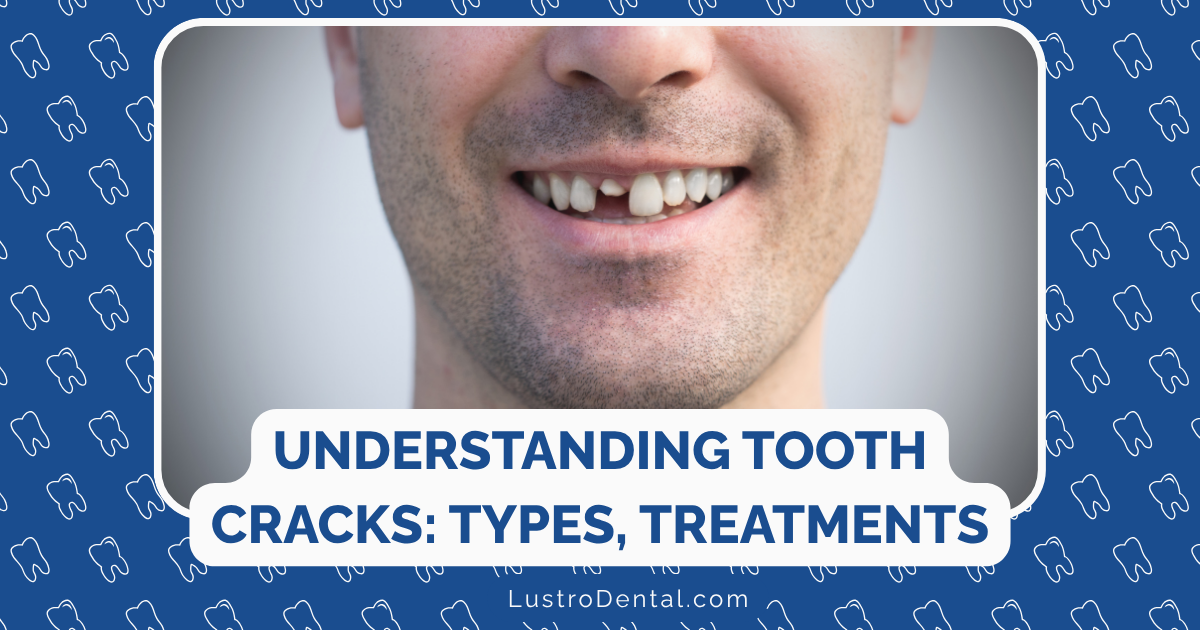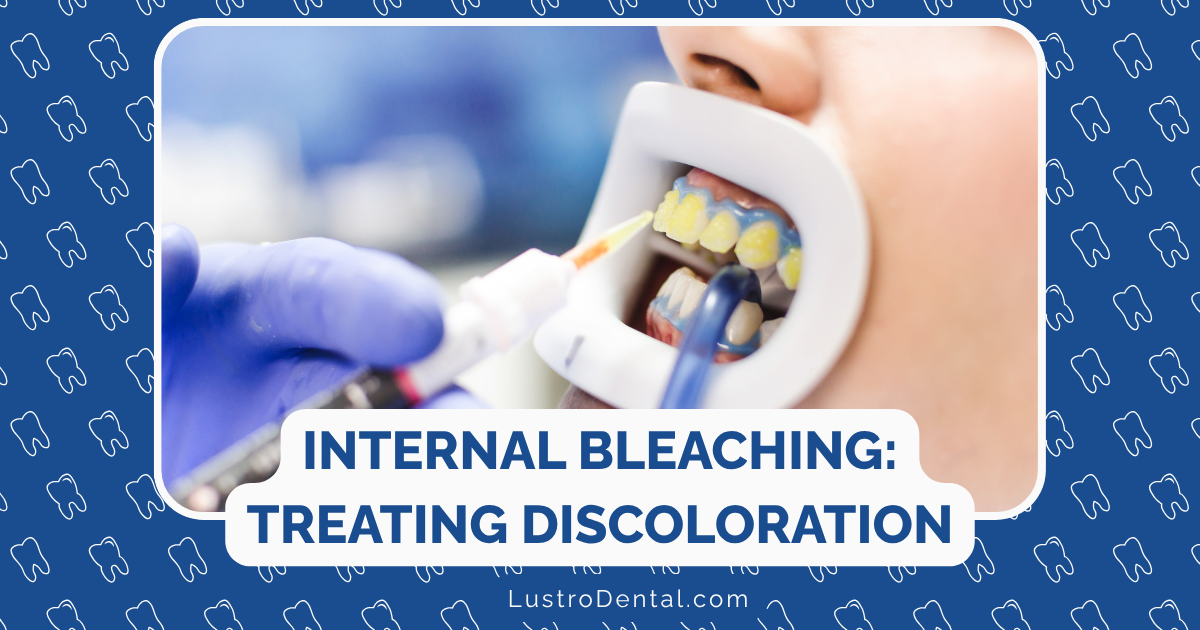Types of Tooth Cracks and Their Treatment Options

That sharp pain when you bite down on something or that unexpected sensitivity to hot or cold might be more than just a passing discomfort—it could be signaling a cracked tooth. As someone who’s guided countless patients through dental challenges, I’ve seen firsthand how confusing and concerning tooth cracks can be.
The good news? Modern dentistry offers effective solutions for nearly every type of tooth crack. But treatment success depends largely on identifying the specific type of crack you’re dealing with and addressing it promptly.
In this comprehensive guide, we’ll explore the five main types of tooth cracks (as classified by the American Association of Endodontists), their symptoms, and the most effective treatment options for each. Whether you’re experiencing symptoms or simply want to be informed, this knowledge will empower you to make the best decisions for your dental health.
Understanding Tooth Cracks: More Common Than You Think
Before we dive into specific types, it’s worth noting that cracked teeth are incredibly common. In fact, they’re the third leading cause of tooth loss after cavities and gum disease. Many people have minor cracks without even realizing it, while others experience painful symptoms that prompt them to seek immediate care.
Dr. Sarah Johnson, endodontist at University Dental Institute, explains: “Tooth cracks develop in three stages—initiation, propagation, and manifestation. Many cracks remain in the early stages for years before causing noticeable symptoms. This is why regular dental check-ups are crucial for early detection.”
Now, let’s explore each type of crack and what it means for your dental health.
1. Craze Lines: The Most Common and Least Concerning
What Are Craze Lines?
Craze lines are tiny, hairline cracks that affect only the outer enamel layer of the tooth. They’re extremely common in adult teeth and are often visible as small vertical lines on the tooth surface.
Identifying Characteristics:
- Only affect the outer enamel
- Don’t extend into the dentin or pulp
- Usually vertical and may appear on multiple teeth
- Typically don’t cause pain or sensitivity
- Most common on front teeth and molars
Causes:
- Normal wear and tear over time
- Temperature changes in the mouth
- Teeth grinding or clenching
- Biting hard objects
- Age-related changes
Treatment Options:
No Treatment Necessary
In most cases, craze lines are purely cosmetic and require no treatment at all. They don’t compromise the structural integrity of your tooth and don’t increase your risk for more serious dental issues.
Cosmetic Treatment (If Desired)
If craze lines affect your smile’s appearance, cosmetic options include:
- Tooth Polishing: Simple polishing by your dentist may reduce the visibility of craze lines.
- Dental Veneers: For more noticeable craze lines on front teeth, porcelain veneers can provide a flawless appearance.
- Teeth Whitening: Sometimes professional whitening can make craze lines less noticeable, though results vary.
Prognosis:
Excellent. Craze lines don’t typically progress to more serious cracks and don’t require intervention for dental health reasons. According to research published in the Journal of the American Dental Association, less than 3% of teeth with craze lines develop more significant fractures within a three-year period.
2. Fractured Cusps: When a Piece Breaks Off
What Is a Fractured Cusp?
A fractured cusp occurs when a piece of the tooth’s chewing surface (cusp) weakens and breaks off. This type of crack often happens around dental fillings or in teeth with substantial decay.
Identifying Characteristics:
- Affects one of the pointed chewing surfaces of the tooth
- May break off completely or be loose
- Usually doesn’t affect the pulp (nerve)
- Can cause pain when chewing or with temperature changes
- Often feels rough to the tongue
Causes:
- Large existing fillings that weaken tooth structure
- Biting down on hard objects
- Teeth grinding or clenching
- Trauma or injury to the tooth
- Severe decay that undermines a cusp
Treatment Options:
Dental Bonding
For minor fractured cusps, composite resin bonding may be sufficient. This involves:
- Applying tooth-colored resin material to the affected area
- Shaping and polishing to match your natural tooth
- Typically completed in a single visit
- Most appropriate for small fractures with minimal chewing forces
Onlay
For moderate fractures, an onlay may be recommended:
- Custom-made in a dental laboratory
- Covers the damaged cusp and reinforces the tooth
- Preserves more natural tooth structure than a full crown
- Made from porcelain, composite resin, or gold
Dental Crown
For more extensive fractures, a full crown is often the best option:
- Covers the entire visible portion of the tooth
- Provides maximum protection against further fracture
- Distributes biting forces evenly across the tooth
- Modern materials offer excellent aesthetics and durability
Dr. Michael Chen of Advanced Dental Specialists notes, “For fractured cusps, full-coverage crowns show significantly better long-term outcomes compared to onlays, with studies showing up to 95% survival at 5 years versus 85% for onlays.”
Prognosis:
Very good to excellent. When properly treated, teeth with fractured cusps have a success rate of over 90%. Since the fracture typically doesn’t extend into the pulp, root canal treatment is rarely needed unless decay or the fracture is extensive.
3. Cracked Tooth: The Classic Incomplete Fracture
What Is a Cracked Tooth?
A cracked tooth refers to a crack that extends from the chewing surface vertically toward the root. Unlike a fractured cusp, this type of crack doesn’t typically result in a piece breaking off immediately. Instead, the crack may gradually spread over time.
Identifying Characteristics:
- Vertical crack extending from the chewing surface toward the root
- May be visible or hidden beneath the gum
- Often causes pain when biting or releasing bite pressure
- May cause sensitivity to temperature changes
- Pain is typically inconsistent or unpredictable
Causes:
- Excessive biting forces
- Large fillings that weaken tooth structure
- Teeth grinding or clenching
- Previous root canal treatment
- Trauma or injury
Treatment Options:
The treatment approach depends largely on the extent of the crack:
For Cracks That Don’t Extend Below the Gumline:
Dental Bonding
For very minor cracks caught early:
- Composite resin material bonds the crack
- Helps prevent further propagation
- Provides some reinforcement
- Success rates around 70-80% for small cracks
Dental Crown
The most common and successful treatment:
- Full-coverage protection prevents crack propagation
- Distributes biting forces evenly
- Modern materials provide excellent aesthetics
- Success rates of 85-95% at 5 years
For Cracks Extending into the Pulp:
Root Canal Therapy + Crown
When the crack has affected the pulp (nerve):
- Root canal removes inflamed or infected pulp tissue
- Followed by crown placement for protection
- Combined approach has 80-90% success rate at 2 years
- Early treatment significantly improves outcomes
For Cracks Extending Below the Gumline:
Crown Lengthening + Crown
When the crack extends slightly below the gumline:
- Surgical procedure exposes more of the tooth structure
- Allows for proper crown placement
- More complex but can save the tooth
- Success rates around 70-80%
Prognosis:
Good to guarded, depending on extent. Research from the Journal of Endodontics indicates that cracked teeth treated with appropriate intervention (crown or root canal + crown) have survival rates between 85-93% at 2 years. However, if the crack extends far below the gumline or has been present for a long time, the prognosis becomes more guarded.
“The key with cracked teeth is early intervention,” emphasizes Dr. Lisa Wong, endodontist at University Dental Center. “A crack caught early and treated with a crown has a dramatically better prognosis than one that’s been allowed to progress for months or years.”
4. Split Tooth: When a Crack Completes Its Journey
What Is a Split Tooth?
A split tooth is the result of a cracked tooth that has progressed until the tooth has separated into distinct segments. This is essentially the end stage of an untreated cracked tooth.
Identifying Characteristics:
- Complete crack extending from surface to root
- Tooth can be separated into two distinct segments
- Usually causes significant pain
- Often results from long-standing cracks that weren’t treated
- May have associated infection or abscess
Causes:
- Untreated cracked tooth
- Severe trauma or injury
- Extensive decay weakening tooth structure
- Large fillings without adequate protection
Treatment Options:
Unfortunately, split teeth generally cannot be saved intact. However, depending on the position and extent of the split, there may be options:
Partial Tooth Retention
For some molars with multiple roots:
- The split portion is removed
- Remaining portion may be saved with root canal therapy and crown
- Only possible if the split doesn’t extend too far into the root
- Success rates around 30-50%
Extraction and Replacement
In most cases, extraction is necessary:
- Dental Implant: Titanium post surgically placed in the jawbone with a crown attachment (success rates >95%)
- Fixed Bridge: Adjacent teeth support a replacement tooth (success rates 85-90% at 10 years)
- Removable Partial Denture: Removable appliance that replaces the missing tooth (most affordable option)
Prognosis:
Poor for tooth retention. Once a tooth has split completely, saving the entire tooth is generally not possible. However, the prognosis for replacement options like implants is excellent, with success rates over 95% at 10 years.
5. Vertical Root Fracture: The Hidden Crack
What Is a Vertical Root Fracture?
A vertical root fracture begins in the root of the tooth and extends toward the chewing surface—essentially the opposite direction of most other cracks. These fractures are often difficult to detect and may be present for some time before symptoms appear.
Identifying Characteristics:
- Begins in the root and extends upward
- Often occurs in teeth that have had root canal treatment
- May cause minimal symptoms initially
- Eventually leads to infection and abscess
- Often discovered during investigation of persistent infection
Causes:
- Excessive pressure during root canal filling
- Post placement in root-treated teeth
- Weakening of root structure over time
- Previous dental trauma
- Excessive forces from grinding or clenching
Treatment Options:
Treatment options are limited for vertical root fractures:
Extraction
In most cases, extraction is the only viable option:
- Removes the fractured tooth completely
- Prevents further infection and bone loss
- Allows for placement of a dental implant or other restoration
Hemisection or Root Amputation
In rare cases involving multi-rooted teeth:
- The fractured root can be removed while preserving the rest of the tooth
- Remaining portion requires root canal treatment and crown
- Success rates around 30-40% at 5 years
- Only viable if the fracture is limited to one root
Prognosis:
Poor for tooth retention. Vertical root fractures generally have the poorest prognosis of all crack types. According to the American Association of Endodontists, most teeth with vertical root fractures require extraction. However, as with split teeth, replacement options offer excellent long-term outcomes.
Making the Right Treatment Decision
When facing a cracked tooth, several factors should guide your treatment decision:
1. Type and Extent of the Crack
As we’ve seen, the type of crack largely determines the available treatment options and prognosis. A thorough examination by your dentist or endodontist is crucial for accurate classification.
2. Symptoms and Pulp Involvement
- No symptoms, healthy pulp: More conservative approaches may be appropriate
- Pain on biting or temperature sensitivity: May indicate pulp involvement requiring root canal therapy
- Spontaneous pain or abscess: Indicates significant pulp damage or infection
3. Location and Function of the Tooth
- Front teeth: Both function and aesthetics must be considered
- Premolars: Moderate chewing forces, often visible when smiling
- Molars: Heavy chewing forces, less visible but crucial for function
4. Long-term Prognosis and Cost Considerations
Sometimes the most expensive option isn’t necessarily the best long-term choice. For example:
- Saving a severely cracked tooth might require root canal therapy, crown lengthening, and a crown—potentially costing $3,000-4,000 with a guarded prognosis
- Alternatively, extraction and implant placement might cost $3,000-5,000 but offer a more predictable long-term outcome
Dr. Johnson advises, “I always discuss both the best-case and worst-case scenarios with my patients. While we always try to save natural teeth when reasonable, sometimes the more predictable option is extraction and replacement, especially for extensive cracks.”
Prevention: Avoiding Cracks Before They Start
While some tooth cracks are unavoidable, many can be prevented with proper care:
Protective Measures:
- Night guard for teeth grinding: Reduces excessive forces on teeth during sleep
- Sports mouthguard: Essential for contact sports to prevent trauma
- Avoiding chewing ice, hard candy, or non-food items: Prevents excessive force on teeth
- Proper restoration of teeth: Ensures adequate support and protection
Regular Dental Care:
- Biannual check-ups: Allows for early detection of small cracks
- Addressing decay promptly: Prevents weakening of tooth structure
- Managing grinding habits: Reduces risk of crack initiation and propagation
When to Seek Immediate Care
If you suspect you have a cracked tooth, don’t wait to seek treatment. Early intervention significantly improves outcomes. Contact your dentist immediately if you experience:
- Sharp pain when biting down or releasing bite pressure
- Sudden sensitivity to temperature
- A piece of tooth breaking off
- Visible crack lines that appear to be deepening or spreading
- Pain or sensitivity that comes and goes
Final Thoughts
Understanding the different types of tooth cracks and their treatment options empowers you to make informed decisions about your dental health. Remember that early intervention is key—what starts as a minor, treatable crack can progress to a split tooth requiring extraction if left untreated.
Modern dentistry offers excellent solutions for most types of cracks, with success rates for properly treated cracked teeth exceeding 90% in many cases. By working closely with your dental professional and addressing cracks promptly, you can maintain your natural smile for years to come.
Have you experienced a cracked tooth? Share your experience or questions in the comments below.







